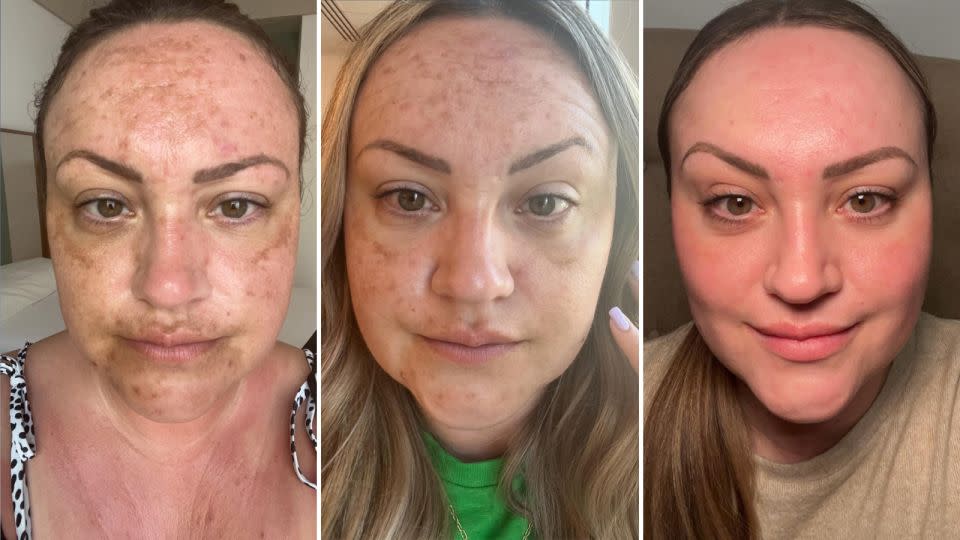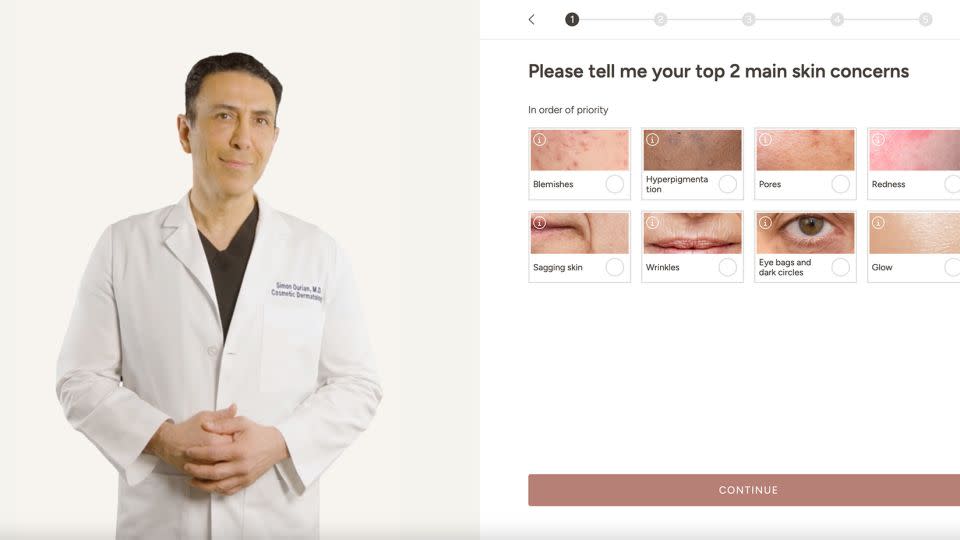The digital dermatologist will see you now
Not so long ago, seeing a dermatologist was only deemed necessary if you had skin problems or possessed a famous face to be pored over in magazines or on the big screen.
Not anymore. Whether it’s due to the rise of social media or celebrity culture, the past decade has seen our quest for apparently flawless skin go up a gear. A recent study found Gen Z spend more cash on their skin than any other age group (and more than previous generations). And in 2023 alone, spending on skincare by tweens and teens leapt 20%.
Technology has also made getting expert advice increasingly achievable, too. Online dermatology developed quickly during the pandemic when Covid-19 restrictions meant that over 90% of dermatologists were using “teledermatology” (e.g. video calls and digital images to discuss skin concerns remotely) compared to 14.1% pre-Covid, said the American Academy of Dermatology.
The advent of digital dermatology, pushed forward by increasingly innovative and sophisticated digital tools — not only smartphones and video calling apps but artificial intelligence — is enabling a growing number of global brands to diagnose, prescribe and produce bespoke creams via virtual consultation rooms. It’s dermatology without the wait list, minus the travel and, somewhat ironically, without the need for a face-to-face interaction. But is it any good?
“The pandemic clearly accelerated the popularity of digital dermatology and (it) is rapidly advancing, encompassing not only teledermatology but also consumer tech, machine learning, augmented reality, and artificial intelligence,” said Shoshana Marmon, Assistant Professor of Dermatology at New York Medical College. “The increased sophistication of remote offerings is a natural progression.”
I have never visited a dermatologist before (digitally or otherwise) or used a prescription cream, but aged 43, I am beginning to notice fine lines, large pores and signs of sun damage that require something stronger than my typical drugstore go-tos. I tried Klira, a digital dermatology service co-founded in 2021 by British dermatologist Dr. Emma Craythorne.
After filling an online questionnaire about my medical history and lifestyle, I answered dozens of detailed questions about my face, sharing everything from my pore size and levels of sun exposure to shininess.
This information is analyzed by Klira’s in-house team of consultant dermatologists who review the questionnaire along with photos of my make-up free face.
Within 24 hours, the results are back. I am a “SkinSize 04,” one of 12 skin categories defined by Dr. Craythorne to reflects how skin looks, feels and ages.
Essentially, it means that while I have a tendency towards blocked follicles due to excess sebum, my skin is otherwise easy to manage, as long as I remember my SPF (and I haven’t over the years).

I am prescribed a bespoke “Klira Solution” to tackle “accumulative UV exposure,” which will be delivered straight to my door within seven days. It’s for use at night and contains the chemical exfoliant tretinoin (only available on prescription) and the anti-inflammatory azelaic acid. The formula should enhance collagen production, strengthen skin barrier and even out skin tone.
Support is attained via an online “personal portal,” which features instructions clinical notes, instructions on how to use the cream, plus recommendations for complimentary products to cleanse, moisturize and protect. There is a one and three-month check in via email, but you can contact the team online whenever you have questions. While the monthly subscription can be cancelled anytime on the £65 flexible membership ($82), the idea is you continue until your skin goals have been reached and ideally beyond that to maintain results.
Speedy, simple but not the same
Although, changes to my skin might require patience (at least six weeks to see an increased “glow”), the speed and simplicity of the digital process itself is undoubtedly impressive.
“These days, we want answers to our skin concerns fast and by using an online dermatology service, I got fantastic knowledge and experience without having to leave the house or be placed on a waiting list,” said Claire Todd, 35, from Cleethorpes, England who turned to Klira to treat pigmentation.
“I was dubious at first as I’ve used creams in the past to no avail, but after eight weeks, I could see there was a difference and at 12 weeks, (my patches of pigmentation) had almost completely gone.”
In Los Angeles, Emily Thompson, also 35, used an AI-powered skin technology created by Dr Simon Ourian — dermatologist to the likes of Kim Kardashian and Megan Fox — to rejuvenate her skin. An uploaded photo is analyzed by AI — alongside a detailed questionnaire about your lifestyle and skin concerns — before an avatar of Dr Simon prescribes personalized products known as the “3 Daily Essentials” (cleanser, toner moisturizer).
“I’d read about Dr. Simon Ourian, so when I learned about his AI-powered skin analysis, I wanted to give it try. My life is busy and finding time for in-person specialist appointments was always a challenge,” said Thompson. “This analysis doesn’t replace in-person visits for serious skin concerns, but it worked for what I needed — my skin to feel hydrated, smoother and more radiant. I love that I get to do this from home.”

While digital dermatology makes it possible to access the expertise of people who might otherwise be out of your price bracket or zip code, there are inevitable drawbacks and limitations to using a digital dermatologist exclusively.
“While it can offer many benefits, there are situations where in-person consultations are essential, particularly for complex or serious skin conditions requiring physical examination, biopsy or blood tests,” says Dr Ifeoma Ejikeme, Medical Director and Founder of Adonia Medical Clinic in London.
It is why Bryony Firth-Bernard, 28, from Gloucestershire, England decided to see a dermatologist in real life to get some help with her severe acne. “I decided to see a dermatologist face-to-face because I’d tried using an online service and there was no change in my skin. Seeing someone was the best money I’ve ever spent. I was put on Roaccutane, which requires blood tests and is not something to be taken lightly, but it was transformative,” she told CNN in a phone interview. “I understand why people would choose a digi dermatologist, acne crushes your confidence, and you’ll do anything to fix it, and it works for some people, but what I needed could only be prescribed by someone in person.”
Even if you do not require in-person treatment, the absence of human contact might not be for everyone. Christal Alert, 29, founder and CEO of Tonal Cosmetics based in New York used online dermatology service Apostrophe to treat severe acne and hyperpigmentation and has mixed feelings about the experience. “Although it was not a total transformation, my skin did get a bit better and I would recommend the digital dermatologist route,” she said. “It’s easy and hassle-free but I felt direct communication with the dermatologist on a virtual call to discuss treatment options in more detail would have enhanced the experience. As with any treatment, it may require further trial and error to find the perfect solution.”
If you do decide to dip your toe, be sure to do your homework. “Look at the platform’s reputation and track record in delivering accurate diagnoses and treatment recommendations. Ask who the provider is, and whether they have the correct credentials and training to give skin or skincare recommendations,” advised Dr Ejikeme. “Check how the platforms ensures privacy and data security, and check what the process is for follow-up consultations and referrals when more help is needed.”
For more CNN news and newsletters create an account at CNN.com


